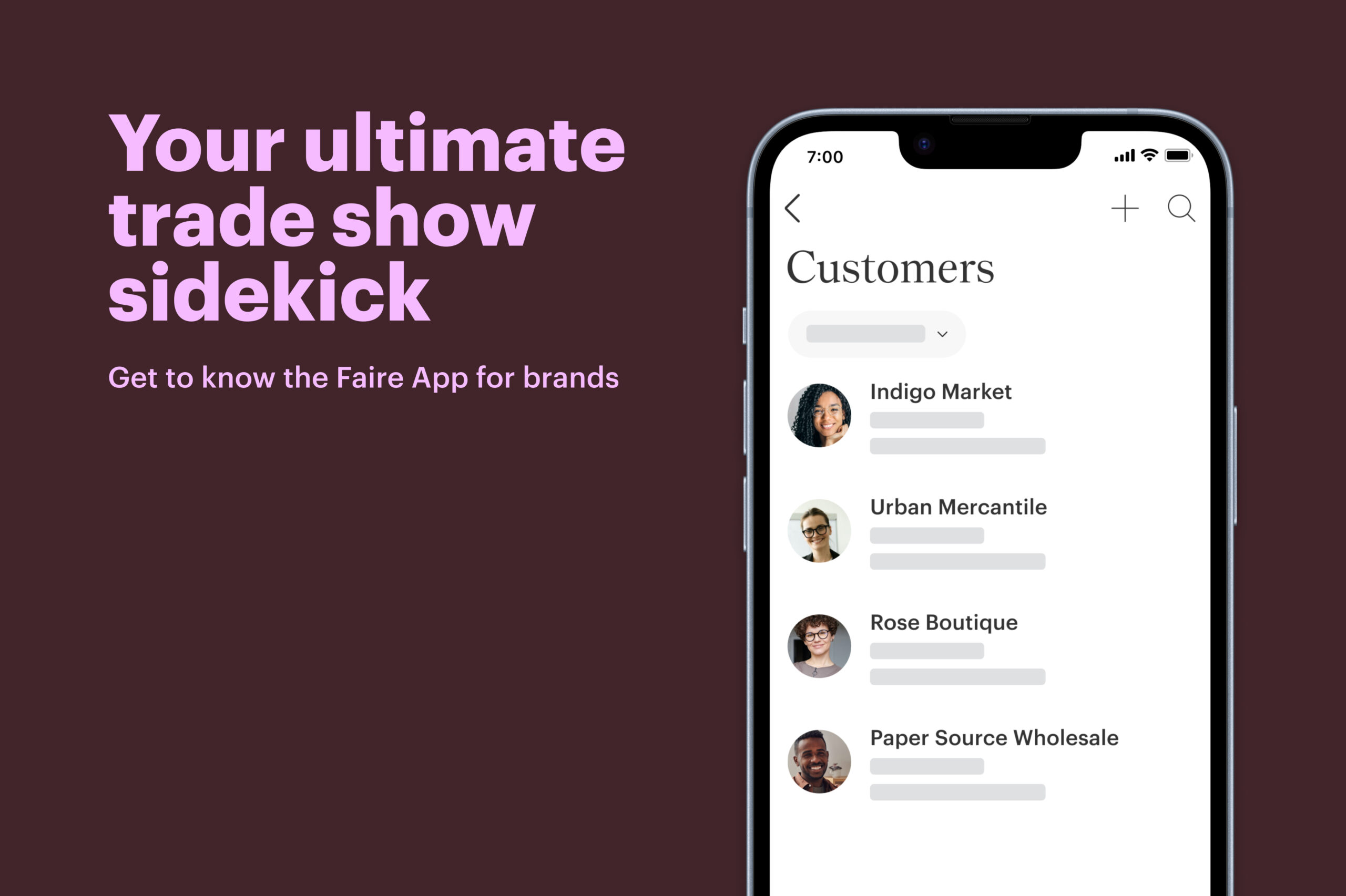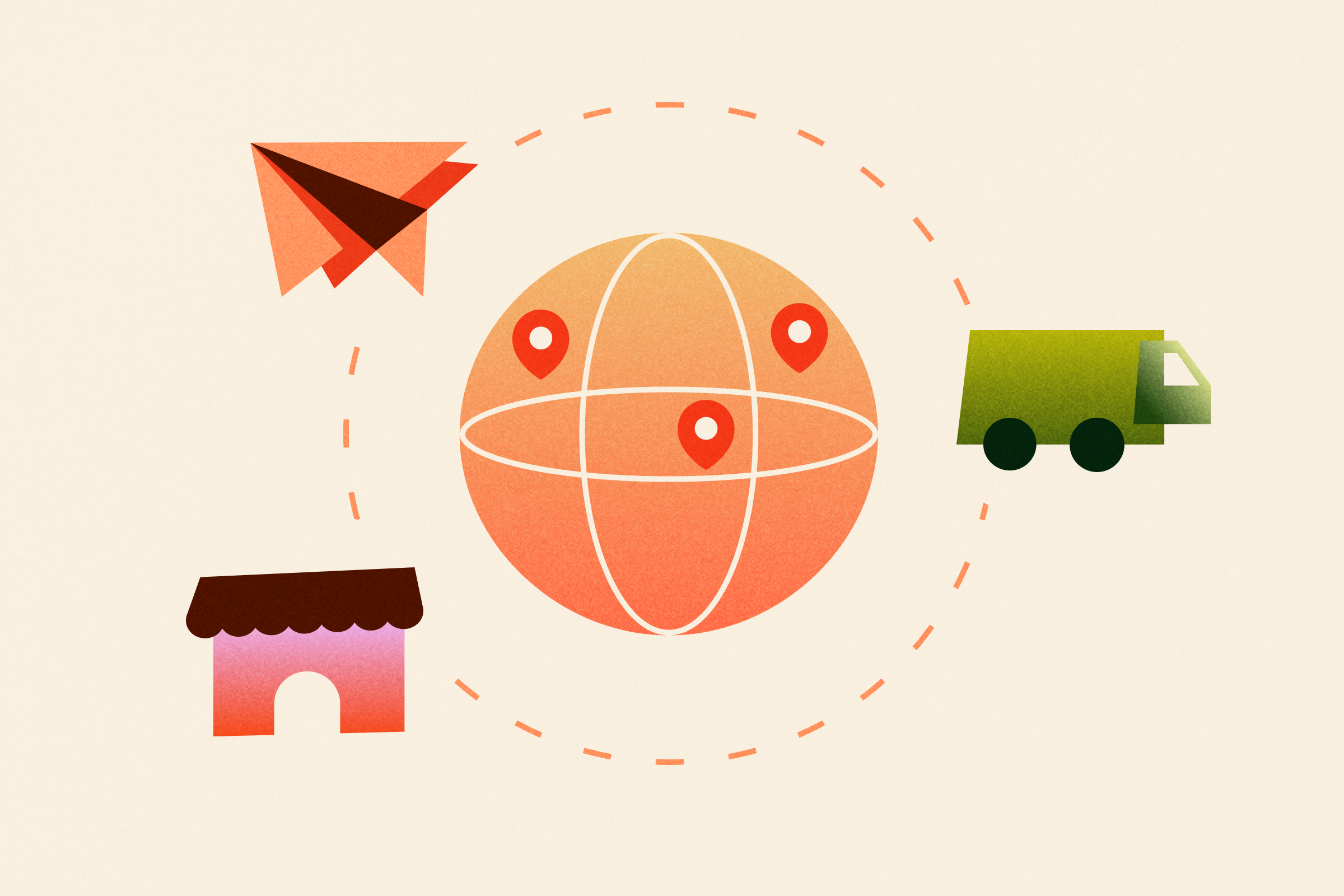

You spend a lot of time, energy, and money acquiring new wholesale customers, from building your social media presence to traveling to trade shows and fine-tuning your paid advertising strategy. And all of these efforts are crucial to growing your business. But how do you know which of these avenues is truly most effective?
This is where customer lifetime value (LTV) becomes a critical tool for brands like yours. LTV represents the total revenue you can expect from a single customer throughout their entire relationship with your brand. And when you get a handle on measuring and tracking LTV, you’re more equipped to acquire the types of customers that reorder from your brand repeatedly.
LTV can get complex, so we’ve put together this simple guide to help you get familiar with the concept and how you might apply it to your business.
3 terms you need to know:
- Customer lifetime value (LTV): An estimation of the total revenue a customer will bring to your business during their relationship with your brand.
- Customer acquisition cost (CAC): CAC reflects the total sales and marketing costs required to acquire a new customer.
- Return on ad spend (ROAS): ROAS measures the amount of revenue a business earns for each dollar it spends on advertising.
What customer LTV is (and isn’t)
LTV is a metric that indicates the total revenue your business can reasonably expect from a single customer during their relationship with your brand. It takes into account each customer’s total amount spent and compares that to the company’s predicted customer lifespan (the amount of time between their first and last order). The longer a customer sticks with you, the greater their LTV.
It’s important to note that LTV does not indicate your business’s success or forecast sales. Instead, it measures the health of the customers you’re acquiring and their average value within a specific time frame (we recommend one year; more on that below). LTV encourages you to look beyond the obvious pull of immediate transactions and focus on and tap into the value of long-term customer relationships.
Once you understand LTV, you can split your customer base into more specific cohorts (e.g., grouping by acquisition channel) to identify which customers are most valuable to your brand. This data can inform business strategies for increasing customer loyalty and reduce customer churn, and ensure your big decisions map back to those valuable repeat buyers.
First-year customer value: A simple LTV starting point
LTV has two primary inputs: customer value—how much revenue a customer will bring to your brands—and time. The most basic formula for calculating customer value relies on historical data and multiplies your average order value by purchase frequency.
Let’s break that down a bit:
- Your average order value (AOV) is the average amount each customer spends per sale. To calculate this, divide your total revenue over the past 12 months by the number of orders.
- Total revenue / number of orders = AOV
-
Purchase frequency is how often a customer makes a purchase from you within a specified period. Pulling historical purchasing data from the past 12 months, you can use this basic formula:
- Total number of orders / number of unique customers = purchase frequency
Time, specifically a customer’s lifespan, can be hard to quantify across your entire customer base. To that end, we advise brands to look specifically at a customer’s value over a fixed period of one year (and, to get the most accurate calculation, include only customers whose first purchase was made over a year ago). It makes for clean math and a clean read on how customer value compares to customer acquisition costs (CAC).
How to calculate first-year customer value
Each customer relationship has a different value, but by looking at enough customers over a fixed time horizon, you can see where your average lies. An average first-year customer value illustrates what your customers are worth to your business one year from when you first acquire them. Let’s say you’re a brand that specializes in hand-dipped candles. Here’s how we’d calculate your average first-year customer value:
- Identify the number of retailers whose first order was placed at least 12 months ago. For your brand, we’ll say that’s 154 customers.
-
Calculate the purchase frequency. We’ll gather the total number of orders placed by each of these 154 customers in their first 12 months as a buyer. Suppose that’s 340 total orders.
- Total number of orders / number of unique customers = purchase frequency
- 340 / 154 = 2.2
-
Calculate the average order value. To get the average amount your customer spends, take your total revenue from those 340 orders above and divide it by the number of orders. So, let’s imagine your total revenue was $119,000.
- Total revenue / number of orders = AOV
- $119,000 / 340 = $350
-
Calculate a customer’s average first-year value. Now that we have all our numbers, we can multiply AOV by the purchase frequency to get our customer value
- Average order value x purchase frequency = first-year customer value
- $350 x 2.2 = $770
So right now, your average first-year customer value is $770. Of course, some of your buyers will be worth more than the average, and others will be worth less. However, our analysis of brand-retailer relationships formed on Faire shows that it can take as few as 12 customers to estimate this number reliably.
The importance of LTV in measuring your marketing and advertising performance
LTV is especially powerful compared to your CAC, the total amount you spend to acquire new customers. Segmenting your customers by acquisition source and calculating a specific LTV for each gives you a feel for both how long it takes you to recoup your investments and where your most profitable customers are coming from.
Remember the first-year customer value of $770 that we calculated earlier? Let’s say that the analysis included only customers acquired through one specific advertising channel and that it costs your brand $150 on average to acquire each of those customers. Since you’re seeing a 5X return on advertising spend (ROAS), you might consider investing more into this particular channel. In other cases where the margin between customer value and CAC is much smaller, you might consider adjusting your strategy (or stop using this channel).
LTV and CAC offer a more accurate and insightful approach to measuring marketing and advertising success. While new sales are a short-term return on your marketing investment, a more valuable, longer-term outcome is a customer who keeps returning. You can optimize your strategy by understanding which marketing and advertising channels have a lower CAC and higher LTV.
Evaluating ROAS: A key difference between B2B and D2C
With your direct-to-consumer business, you likely evaluate ROAS on a campaign and expect an immediate return. However, given that wholesale customers offer much higher and longer-term value, we believe it’s more helpful to analyze ROAS over a 12-month time horizon. This allows your brand to account for any re-orders a newly acquired customer places in their first year.Your ROAS will vary across your acquisition channels, and there’s no one-size-fits-all benchmark for success. Ultimately, you should think critically about your brand’s goals and set the best threshold for your business.
This article is not a substitute for professional services or advice. Recommendations and projections are for informational purposes only, and you are solely responsible for any decisions made based on this information.




